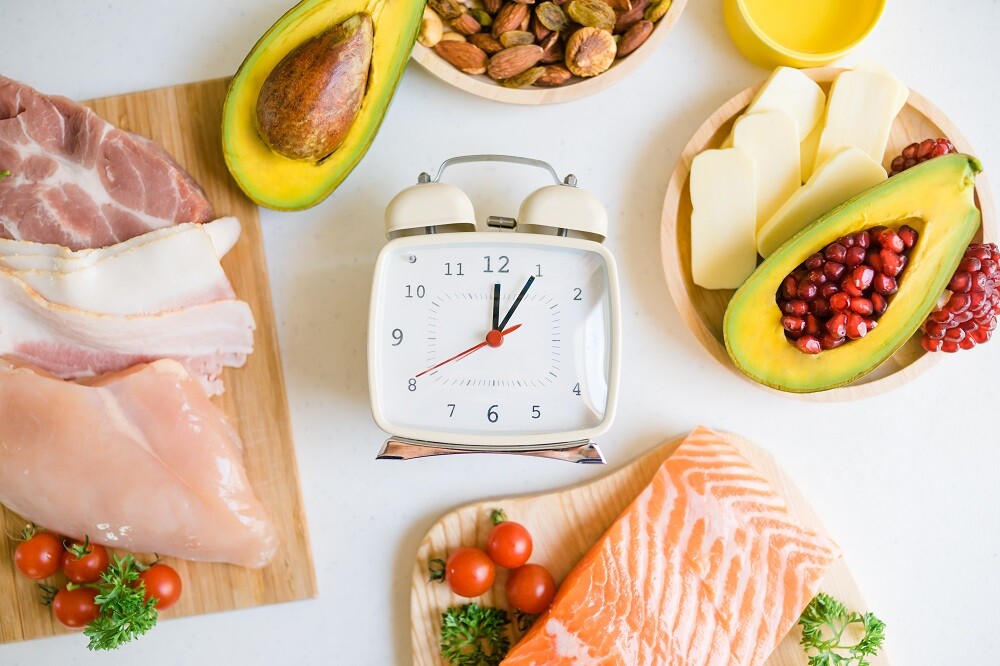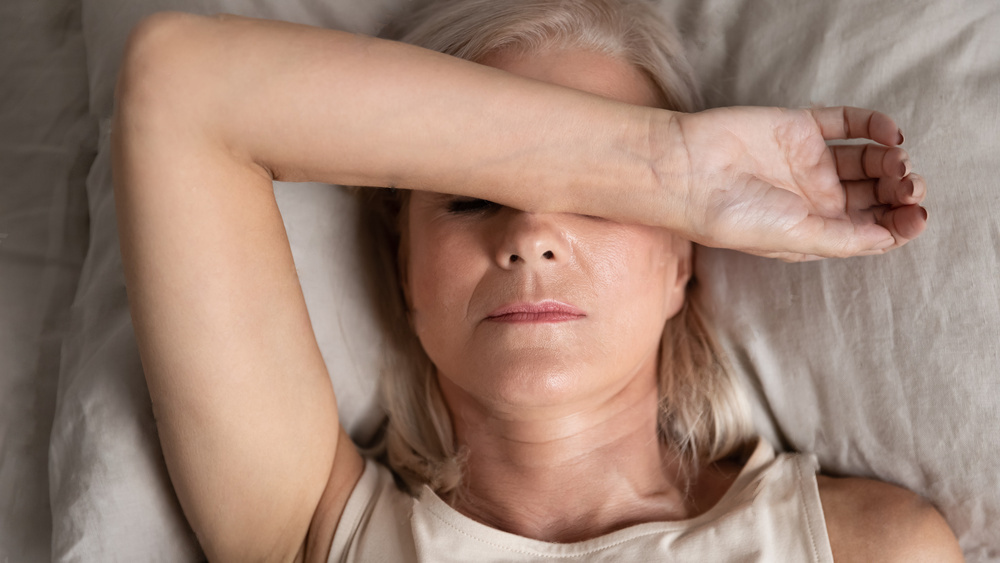We are all aware that exercise is important for our health, especially as we age. But what type of exercise is best? How much should we exercise? A pl...
We are all aware that exercise is important for our health, especially as we age. But what type of exercise is best? How much should we exercise? A plethora of questions come to mind.
Exercise can be beneficial during menopause. Some research has been conducted on exercise reducing menopausal symptoms such as hot flushes, poor sleep, vaginal dryness and sexual dysfunction. (1,2) It can also help to maintain good mental health, as well as preventing osteoporosis and helping to lose or maintain weight.
Types of Exercise
Both cardio and strength exercises can have an impact during peri-menopause and menopause. Cardio exercise is the kind that gets your heart rate up, for a sustained period of time. A good indication of cardio exercise is that if you are huffing and puffing, and having a hard time holding a conversation, then your heart rate is up.
Examples of activities that require moderate effort for most people include (3):
• walking fast
• doing water aerobics
• ballroom and line dancing
• riding a bike on level ground or with a few hills
• playing doubles tennis
• pushing a lawn mower
• canoeing
• volleyball
Vigorous physical activity can include (4):
• aerobics
• jogging / running
• swimming laps
• singles tennis
• jumping rope
• lifting, carrying and digging
Strength training, on the other hand, involves weights. When we do strength training, we are training our bodies to be able to move more weight with more power. Most people will immediately think of barbells and dumbbells, but there are other ways to do strength training to get results. You can use your own bodyweight to build strength – push-ups, chin-ups, squats, lunges, etc.
Examples of muscle-strengthening activities include (3):
• carrying or moving heavy loads such as groceries
• activities that involve stepping and jumping such as dancing
• heavy gardening, such as digging or shovelling
• exercises that use your body weight for resistance, such as push-ups or sit-ups
• yoga
• lifting weights
Exercise and brain health
Exercise has many proven benefits, one of which is increase of endorphins during exercise. Endorphins are chemicals that interact with your brain to reduce feelings of pain. They also trigger a positive feeling in the brain. (5) Exercise also increases serotonin release, which helps to make us feel good!
It has been hypothesized that reduced endorphins in the brain (specifically the hypothalamus) may provoke hot flushes. Regular physical exercise can decrease the frequency and severity of hot flushes. (6; p490)
Osteoporosis
The Australian Government defines osteoporosis as “a condition where bones become thin, weak and fragile, such that even a minor bump or accident can cause a broken bone (minimal trauma fracture). Osteopenia is a condition when bone mineral density is lower than normal but not low enough to be classified as osteoporosis.” (7) Osteoporosis is most common in women, affecting 1 in 4 women over the age of 75. Strength training can help to reduce the risk of osteoporosis. A 2018 study even states that it “may be the most optimal strategy to improve the muscle and bone mass in postmenopausal women, middle-aged men, or even the older population.” (8)
Weight Loss
It’s no secret that exercise helps with weight loss. The American College of Sports Medicine’s Position Stand on exercise states that evidence supports that between 150 to 250 minutes per week of moderate physical activity is effective in preventing weight gain, and provide minimal weight loss. More than 250 minutes per week of physical activity is associated with significant weight loss. (9) More weight loss is seen with dietary restrictions.
Resistance training does not seem to be an effective means for weight loss but is associated with numerous other health benefits, (9) including:
• Improved muscle strength and tone – to protect your joints from injury.
• Maintaining flexibility and balance, which can help you remain independent as you age.
• May help reduce or prevent cognitive decline in older people.
• Prevention or control of chronic conditions such as diabetes, heart disease, arthritis, back pain, depression
• Improved mobility, balance and posture.
• Increased bone density and strength and reduced risk of osteoporosis
• Improved sense of wellbeing – resistance training may boost your self-confidence, improve your body image and your mood. (10)
Exercise Frequency
The Australian Government Department of Health has published guidelines on how much exercise we should include. The recommendations for adults aged 18-65 years are to be active on most (preferably all) days, to weekly total of 2.5 to 5 hours of moderate activity or 1.25 to 2.5 hours of vigorous activity or an equivalent combination of both and strength training is recommended at least 2 days per week.
For people over 65, at least 30 minutes of moderate activity on most (preferably all) days is recommended, as is doing a range of activities that incorporate fitness, strength, balance and flexibility. See the full guidelines here. (11)
Conclusion
Exercise is beneficial in all life stages, including perimenopause and menopause. Make sure to seek advice from your health care professional before starting a new exercise regime.
References
1. Stojanovska L et al, 2014 ‘To exercise, or, not to exercise, during menopause and beyond’, Maturitas, 77 (4), viewed on 3 June 2021, https://pubmed.ncbi.nlm.nih.gov/24548848/
2. Ashgarai M et al, 2016 ‘Effect of aerobic exercise and nutrition education on quality of life and early menopause symptoms:A randomized controlled trial’, Women Health, 57 (2), viewed on 3 June 202, https://pubmed.ncbi.nlm.nih.gov/26909662/
3. Healthdirect, ‘Physical activity guidelines for older adults’, Australian Government Department of Health, viewed on 3 June 2021, https://www.healthdirect.gov.au/physical-activity-guidelines-for-older-adults
4. Healthy Weight Guide, ‘Levels of physical activity intensity’, Australian Government Department of Health, viewed on 3 June 2021, http://healthyweight.health.gov.au/wps/portal/Home/get-informed/physical-activity-and-sedentary-behaviour/levels-of-physical-activity-intensity/!ut/p/a1/jZDBDoIwDIafhQdYVgYBPCIYNyNcjBF3MVOnLMFB2CTBpxe5GpGe2uT70vbHHBeYa9Gpu7Cq1qL6zDw4UbJaucR32TrYJMDCKI-y3CU7zxuA4wAk65j64RYA_IgAS5c0DRcZAAvm-fCjYvjnb2YsIG2WZHfMG2FLpPStxkVT9kZdRIXExapO2R4JfUVGXqW2ou3RWZZDDPWzxUUlO1kZVN_Qt6S0ldoMHT5gPl4ylcQITLzaPPbFa0tBxY7zBlWAShY!/dl5/d5/L2dBISEvZ0FBIS9nQSEh/
5. Bhandari S, 2020 ‘Exercise and Depression’, WebMD, viewed on 4 June 2021, https://www.webmd.com/depression/guide/exercise-depression#:~:text=When%20you%20exercise%2C%20your%20body,similar%20to%20that%20of%20morphine.
6. Pizzorno et al, 2008, ‘The Clinician’s Handbook of Natural Medicine’, 2nd Edition, Churchill Livingstone Elsevier, Missouri
7. 2020, ‘Osteoporosis’ Australian Institute of Health and Welfare, viewed on 4 June 2021, https://www.aihw.gov.au/reports/chronic-musculoskeletal-conditions/osteoporosis/contents/what-is-osteoporosis
8. Hong A & Kim SW, 2018, ‘Effects of Resistance Exercise on Bone Health’, Endocrinology and Metabolism, 33(4) viewed 4 June 2021, https://www.ncbi.nlm.nih.gov/pmc/articles/PMC6279907/
9. Donnelly J et al, 2009, ‘Appropriate Physical Activity Intervention Strategies for Weight Loss and Prevention of Weight Regain for Adults’, Medicine & Science in Sports & Exercise, 41(2), viewed on 4 June 2021, https://journals.lww.com/acsm-msse/Fulltext/2009/02000/Appropriate_Physical_Activity_Intervention.26.aspx
10. 2018 ‘Resistance Training – health benefits’, Better Health Channel, Victorian State Government, viewed on 4 June 2021, https://www.betterhealth.vic.gov.au/health/healthyliving/resistance-training-health-benefits
11. 2021, ‘Physical Activity and Exercise Guidelines for all Australians’, Australian Government Department of Health, viewed on 4 June 2021, https://www.health.gov.au/health-topics/physical-activity-and-exercise/physical-activity-and-exercise-guidelines-for-all-australians
About The Author - AMC Team
Our team consists of doctors, nurses, program assistants, naturopaths and nutritionists that join their wealth of knowledge to offer our patients and website visitors interesting and insightful articles to assist you understand the symptoms you are experiencing and how to relieve them.

